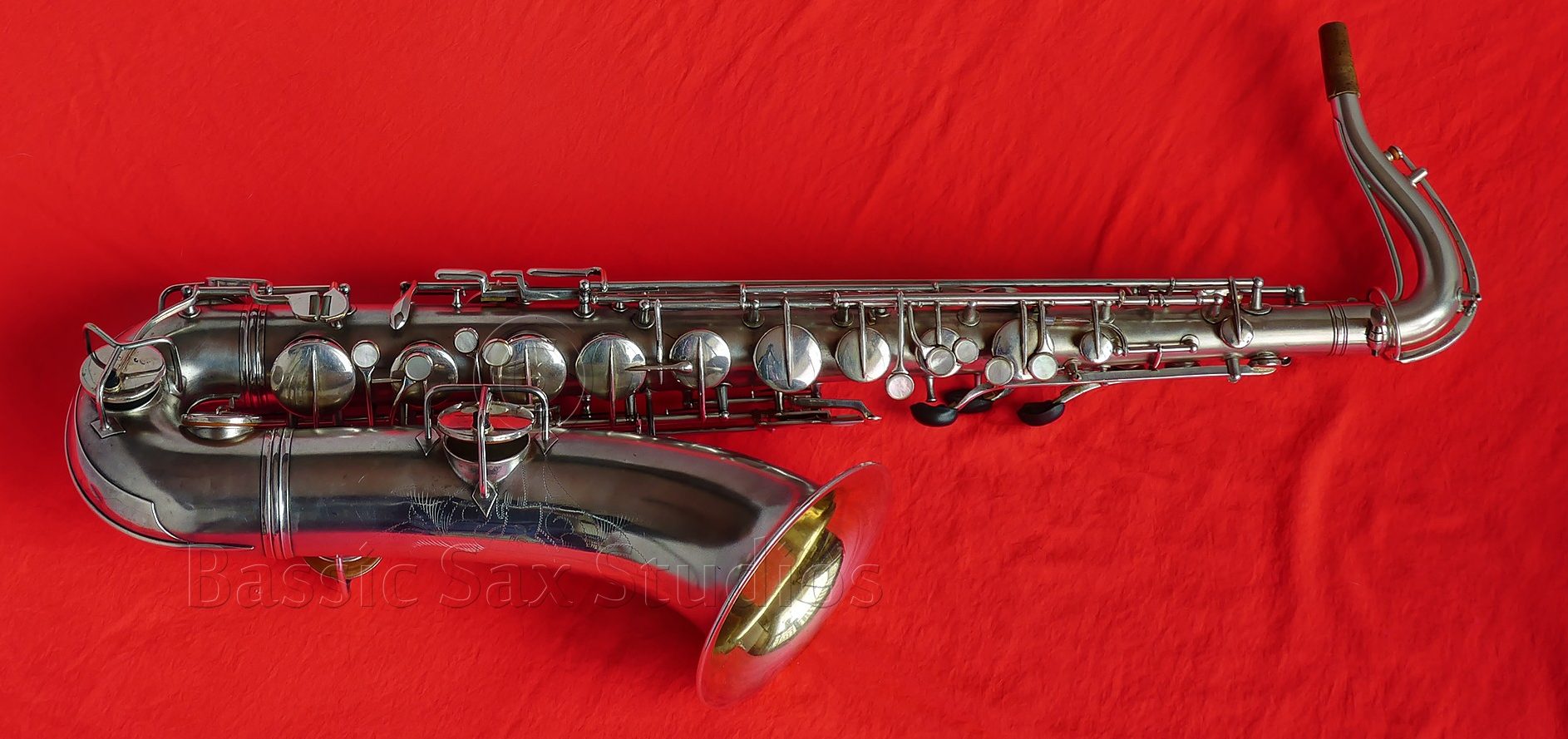Unfortunately there is no date of publication provided anywhere in this brochure. However, in all likelihood this promotional pamphlet is from the early 1950s. Read page 2 for a detailed explanation why I believe this is the case.
Some Of The President’s Features In Pretty Pictures
For this page of features, I am including photos of Hohner President saxophones which illustrate what these features look like in real life. These photos are included after the scanned imaged. A description of each feature will precede each photo.
Quick Action Automatic Octave Mechanism
While the quick action octave mechanism may be similar, what is very noticeable between the President in the illustration above, and my tenor 104XX, is the neck/socket assembly. Mine has the Ges.- Gesch. (legally protected) double socket. Although the round thumb screw that fastens the neck is not visible in the photo below, the matching lyre-holding screw that Hohner used is. What is also visible in the photo below is the long socket that accepts the neck tenon.
If you closely look at the same area in the horn illustrated in the brochure above, you will notice that Hohner used a conventional screw to fasten the neck. This was done prior to the introduction of the double socket neck. (See page 2 for a full discussion of this feature.)
Left Palm & Pinkie Keys
There was not a great deal of change to the left palm keys and pinkie cluster, although the shape of the cluster did change a bit. Compare the above illustration to the photo of tenor 8943. The G# key is shaped differently.
In the horn front the brochure, the G# key almost has the shape of a mountain, complete with a sharp peak. Even alto 24XX does not have the mountain peak shape in its G# key. It appears to already have the same shape that will stay with the Presidents until near the end of their production run. (It is a bit hard to make out in the photo, and unfortunately there are no better ones from the seller.)
One key that differs quite a bit between the brochure and this real tenor is the front F key. Note how in the illustration it is quite high, and its arm appears quite long. Not so on the later model horn. Again, this photo illustrates the Hohner President saxophones as we commonly see them. The pamphlet shows an unusual variation. (Most likely an older version.)
Source: junkdude.com
Tone Holes: Bevelled? Rolled? What The Heck Kind Did They Have Anyway?
Although I cannot conclusively state that the saxophones illustrated in the brochure do not have rolled tone holes, the tone holes do look much more like the soldered and bevelled ones we see in this alto 24XX…
Source: eBay.com
than like the drawn and rolled ones we see after approximately 1953, and as illustrated in alto 48XX.
Source: H. Kahlke
As I previously stated on page 2, since this brochure extols the virtues of the Hohner Presidents, if in fact these horns already had rolled tone holes, in all likelihood the company would have mentioned this fact in its promotional material.









You must be logged in to post a comment.